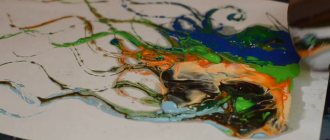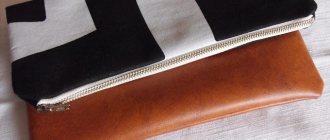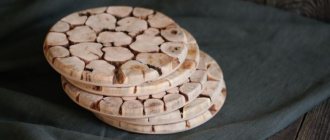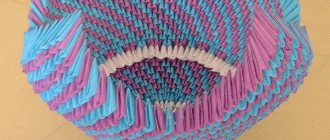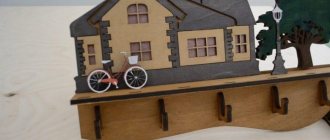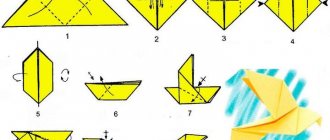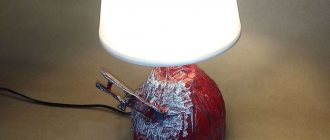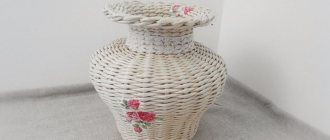Techniques for making pompoms from fabric, paper, rain, plastic bags. Photo and video instructions.
Decorating a space is a creative activity that inspires people of all ages. More often than not, decorators are women. They are closer to the theme of transforming the world around them, bringing beauty and harmony into it.
Pompons have taken their rightful place in the theme of decorating spaces for various events. Although initially they were used to decorate gaderob items.
It turns out that making them yourself is quite simple. Yarn, fabric, New Year's tinsel, and paper are used. It is important to follow the correct sequence of actions and arrange the pompoms harmoniously.
Yarn pompoms. What are they needed for
As an independent product, they are very cute and cute. But the need is not limited to this - after all, with their help they make a huge number of wonderful things! They decorate hats, scarves, mittens, booties, blouses, etc. with pompoms. Craftswomen have not limited themselves to clothes and create interior items to liven up rooms - they sew them onto pillowcases, bedspreads, blankets, make warm and cozy rugs for children's rooms, decorate ottomans, decorate postcards. And how many interesting soft toys are created from fluffy pom-poms! So, once you start making pom-poms from yarn, it will be difficult to stop! This is a very fun, interesting and useful activity!
Try to keep your child busy and create some interesting thread crafts together. This brings us closer together and joint creativity will be beneficial!
The art of making pompoms
Few people realize how easy it really is to make a pompom from threads with your own hands.
Nowadays there are many easy options for creating fluffy balls. You can make a pompom of any color and size, you just need to choose the right manufacturing method.
Below you can see step-by-step instructions for creating pompoms with your own hands and choose the one that suits you best.
How to sew fleece to a knitted baby hat
Sometimes a strip of material 10–15 centimeters wide is simply sewn into an adult knitted hat. It protects the ears and the main part of the head, so you can do it. If the hat is for a child, then it is important to play it safe, cut out a closed lining and even make ears.
Step-by-step production of lining
- Fold the baby hat in half, place it on two layers of fleece, and draw a chalk line around the perimeter, including the ears.
- Cut out the details. Make a cut in the middle of each. Sew the inner cap with a needle.
- Insert the lining, check the size fits.
- Hem the fleece lining to the knitted baby hat using small stitches over the edge.
You can cut out the most ordinary lining and make ears separately (not necessarily from fleece, cotton or knitwear will do) . In this case, they are the first to be sewn on. It is important that nothing is visible from the outside. Then the inner cap is inserted, it will hide the edges of the ears.
Clothing size xl - what size is women's?
Fleece snowman pattern
Tools and materials
To create beautiful, smooth and attractive balls, check out some secrets for making them. The correct course of your actions helps in your work and eliminates unnecessary stress in case of failures.
So, how to make a pompom for a hat from yarn? First, you should acquire all the necessary materials and tools.
The most important thing, of course, is the selection of yarn. It is better if it is dense, porous and voluminous - this will give the pompom airiness and volume.
The shade should be chosen based on the color of the product itself and match it.
The pattern for work directly depends on the creation method - it can be a ring, square, horseshoe, cut out of thick cardboard.
Naturally, the sharpness of scissors is very important - with dull scissors you will not cut thick layers of thread.
The threads used to secure the pompom must be different, much stronger than the main yarn. How you secure the pompom depends on them. A weakly tightened middle will not allow it to be even, the threads will fall out and the product will very quickly lose its shape.
You will also need thick cardboard for patterns.
Darning needle or crochet hook - for pulling the wound thread.
Wool
The most suitable yarn for pompoms. It makes crafts especially lush and soft. The thickness of the thread is selected depending on the diameter of the ball. For large ones - thicker, for small ones - thinner.
The threads may not be new, such as an unraveled scarf or sweater. In this case, they should be wetted and dried to level them.
IMPORTANT! From “curly” yarn, pompoms will turn out unattractive and unkempt.
Pattern
It is necessary to take care of the patterns. Craft stores sell ready-made ones, but it’s not difficult to cut them out yourself from thick paper. The width of the ring is half the diameter of the craft. The greater the width, the larger the ball. The smaller it is, the more miniature it is.
Stationery
For this work you will definitely need pointed, well-sharpened scissors. Depending on the chosen method of completing the craft, you may need a stapler or office clips , a compass, a ruler, and a pencil.
Choosing a model and fabric
Hats with ears are suitable for girls, as well as teenagers and children of both sexes.
Wide models are suitable if you have a round or oval face . Widely spaced ears will look harmonious on those with a narrow face.
For comfortable use of the product, we need to choose a fabric that has good stretch:
- Knitwear, elastic in one or two directions.
- Stretch denim.
- Various types of fleece.
- Natural fur.
- Faux fur on a knitted base.
- Used knitwear.
Advice! If you decide to use a sweater or T-shirt on a hat, then the material must first be prepared. Wash it with a detergent suitable for the fabric. If it is natural wool, then a good hair shampoo will do just fine. Expand the product. Iron through a damp iron. You can start cutting.
Making Tips
It is recommended to adhere to the following tips to make a high quality product:
- The porous and dense texture of the yarn gives pompoms pomp and volume;
- if you plan to create a product with a multi-colored design, you must use a pre-printed diagram;
- It is advisable to have special rulers or patterns for ease of creating a template. Shapes such as circle, horseshoe, square or rectangle are used as templates;
- scissors must be sharp;
- the colors of the decorated item and the pompom should not conflict with each other;
- Each of the pompoms included in the product must be tightly tied with threads in the center. This is necessary to maintain the neat appearance of the product for a long time.
Yarn selection
For making pompoms, stiff yarn with the addition of natural wool is more suitable.
It is best if the yarn is porous in texture. The finished products are voluminous, fluffy, and hold their shape well. However, they can be made from any yarn, for example, with the addition of synthetics or acrylic. 100% cotton yarn will not work as the pompoms will not be fluffy.
You can combine pompoms from any yarn into the finished product - this will give the item a unique look. Thick yarn gives the pom-pom texture. The more wool there is in the thread, the softer the product will be. To tighten the yarn more tightly, you can use strong threads, such as silk, when making a pompom. They will be invisible on the finished product.
Products made from pompoms require delicate hand washing at 30 degrees. Dry on a vertical surface. Then carefully comb it and trim it with sharp scissors.
How to get a product dense and round
How to make a yarn pompom neat, dense and round, and in such a way that it does not take much time, is described below. The greatest difficulty is to ensure that it remains dense and round and does not lose its shape over time due to the gradual loss of threads. To make the pompom tight and round, you need to tie a constrictor - a special strong knot.
To obtain the desired result, it is necessary to make a constrictor. This is a special type of knot, which is characterized by high tightening force. This knot is used to secure the thread workpiece.
The strength of the pompom can be ensured by tying it with wet thread and tying it several times. The more threads in the workpiece, the denser the pompom will be. In order for the pompoms to retain their shape for a long time, the yarn must be aligned. If using threads from unraveled products, they must be placed wet under the press.
If the yarn is thin
Pom-poms made from fine yarn are usually used to decorate items knitted from the same material. Although it will not turn out to be large in diameter, small products will look neat. It is best to make such a pompom on a fork. You will get small fluffy pompoms. They are not highly durable, but will look beautiful as decoration for things that are not subject to heavy loads.
How to get loose
To get a loose pompom as quickly as possible and without special preparations, you need to do the following steps:
- Threads are wound on the fingers To make the pompom loose, the threads need to be wound on the fingers
- The size is determined by the number of fingers on which the yarn is wound.
- The disadvantages of this option include the fact that the finished pompom does not retain its shape well.
On the palm
There is another original method with which you can quickly and easily make a pompom. A master class using this method takes no more than five minutes, and the result, with proper skill, is very interesting.
Thickly wrap the threads around all the fingers of your left hand, except the thumb (or right, if you are left-handed), remove the resulting ring from your palm, pass the thread through it, and tightly tie one of its edges.
By cutting the ring on the opposite side and fluffing the threads, you will get a wonderful pompom, a little disheveled look, which is suitable both for decorating clothes and jewelry, and for adding zest to the interior of an apartment, for example, for decorating garters for curtains, tablecloths, creating decorative elements or toys. If winding thread around your palm is inconvenient, then you can use any rectangular piece of cardboard as the basis for a pompom.
Yarn pompoms
They are often used to decorate knitted items (hats, scarves, mittens). They can be used for crafts with children. They are used to make cozy rugs, blankets, and chair covers.
There are four manufacturing methods:
- On a round base;
- Using a fork;
- On the hand;
- Fast way.
Making buboes using a template in the form of two donuts
Step by step instructions:
- Two rigid pieces are wrapped together with yarn. The more layers of strands there are on the templates, the more magnificent the bubo will be.
- The thread must be cut along the outer edge.
- Stretch a piece of thread between the layers of the workpiece and tightly tie the resulting pieces of yarn.
- Carefully remove the template.
- Fluff the “ball” and trim it with scissors.
How to make a pompom on a fork
This could be an ordinary table fork, or a cardboard blank in the shape of a horseshoe.
- Wrap the yarn around the tines of a fork.
- Pull across the middle and tie tightly.
- Remove from fork.
- Cut the resulting loops.
- Fluff the product.
- Trim with scissors.
How to make a small bubo
Fluffy pompoms of the smallest size will be obtained if the thread is wound not on four, but on two tines of a fork.
On a cardboard rectangle
This method is easy to implement. With the help of such cardboard rectangles it is easy to make smooth, fluffy buboes of different sizes.
How to make a large, lush bubo
A large bubo can be made using improvised means. For example: two plastic bottles or cardboard tubes.
How to make a pompom on your hand
By winding a strip of yarn around your hand, you can quickly create this fluffy miracle without any additional equipment.
- Wrap the thread around four or two fingers on the palm.
- Tie the winding in the middle.
- Remove the workpiece from your hand.
- Cut the loops.
- Fluff and trim.
A quick way to make pompoms
Sometimes you need to make a large number of buboes. For example, in order to make a rug or a chair cover from them.
To quickly make a pompom, it is best to use this method:
- Turn the stool or coffee table upside down.
- Having tied the thread to one of them, wind it between two supports, trying to position it horizontally and pull it evenly.
- Using a measuring tape, divide the entire strip into parts.
- Tie the wound threads crosswise, tying them tightly in the designated places.
- Remove the yarn from the support and cut between the constrictions.
- Fluff the “balls”.
- Trim with scissors.
Making flowers to decorate a hat
The best decoration for a headdress is, of course, a flower. To make it you will need very little time and materials. A hat with such decor will become stylish and fashionable, and its owner will become perfect.
- Cut circles of the required size from the fabric.
- Fold all but one into triangles.
- Sew the blanks to the remaining unfolded circle.
- Attach rhinestones in the central part, with the help of which all seams will be hidden.
- Attach the finished flower to the headdress with threads.
Tip: you can further decorate your headdress by attaching several small green feathers to the flower.
Pompom from a bunch of threads
The last method is quite easy. Take a bunch of threads. Next, you need to tie it with a thread in the middle. After this, the bundle is folded into two identical parts.
Taking a couple of centimeters, you need to form several turns around the folded bundle of threads.
We tie the ends well and hide them inside. Next, you need to trim the ends of the threads in the bundle so that the pompom is neat and beautiful.
Pompom using a chair
If you need to make a lot of pompoms quickly, then this option is for you. All you need is scissors, thread and a chair. How to make a pompom from yarn?
The essence of this method is that you first need to form a sausage from threads. Next, cut it in half.
This is done by going through the following steps:
- We take a chair. Gradually wrap it with threads.
- Carefully remove them and tie them with pieces of thread. Be sure to ensure that they are at the same distance.
- After this, we cut the threads in the empty spaces. This way you will have many identical pompoms.
- You can also wrap the threads around the chair and only then cut them. It's much more convenient.
We make calculations for the wedge
The main part of the hat is the bowler, it consists of 6 wedges. To correctly calculate the base of the wedge, you need to take into account how thick the insulation of the cap will be. If the insulation is thick, you should add 6 cm to the circumference of the head, that is, you get OG = 48 + 6 = 54 cm. Now you can find the width of the wedge 54: 6 = 9 cm. The height of the wedge is found by dividing the distance from the eyebrows to the back of the head in half, that is 34: 2 = 17 cm. Now you can make the first part for the pattern of a children's hat with earflaps - a wedge pattern (1 part in the photo). We get a rectangle whose sides are 9 and 17 centimeters. Mark the center on the top side (9: 2 = 4.5) and build an isosceles triangle. From the middles of the sides of the triangle, we put 1 cm perpendicular to the side, then we connect the top of the triangle and the points of its base with a smooth line.
We make pompoms from threads with our own hands step by step based on a cardboard circle template
To make a pompom you will need the following materials:
- Threads;
- Needle (it is advisable to take a large one with a large eye; a needle for threading an elastic band is perfect);
- Cardboard (for templates).
First of all, it is necessary to prepare templates for the future product. It is necessary to prepare two identical circles from cardboard, and then cut out the core in the center so that the width of the rim, and in the future the radius of the pompom, is approximately 0.5-0.7 cm.
We thread the needle, maybe in two layers. We apply two blanks to each other and begin to wrap the paper blanks with threads. The thread should not be too tight, but should not hang. We wrap in one layer, then the next, until the thread runs out. We make enough layers so that it is enough for a fluffy pompom. You can make layers of different colors, therefore the pompom will be colored. When changing the thread, the one that has run out should not be cut to zero from the workpiece; in the future, all the excess length of the threads will be cut off.
We continue to wind the threads until the required density of the threads located on the workpiece is felt. We fill the workpiece with threads until the empty center of the circle is completely covered, then the pompom will definitely be tight and dense, and therefore fluffy.
The next step is to cut the threads along the edge of the circle between the cardboard blanks. We cut evenly so that the length of the threads is the same. Most likely, you won’t be able to cut all the threads at once; we do it gradually, and then you’ll end up with a pom-pom like this.
Now let's start fixing the pompom. You need to move the cardboard a little and tie the center between the paper blanks with thread. The main thing is not to move from the middle. After this, the templates can be removed. Cut them and carefully pull them out. The pompom is almost ready, but its circumference is not even. Use scissors to trim the length of the threads. It’s better to grab a little bit at a time so you don’t suddenly cut off too much. We get such a wonderful pompom.
How to make a pompom from threads
Step 1
Cut out two rings from cardboard. The outer radius is 3 cm, the inner radius is 1.5 cm. Buy a compass (a goat’s leg is more convenient), teach your child how to use this useful tool, and at the same time explain how the radius of a circle differs from the diameter.
Step 2
We cut the wool into 4-8 threads, about 2 meters long
Step 3
We connect two cardboard rings together. We hold the beginning of the thread tightly with one hand, and with the other we begin to tightly wrap the ring in a circle.
You can first secure the threads to the ring using a loop. Fold the threads in half and insert the rings into the holes. Pass the loose ends through the resulting loop and tighten.
STEP 4
We wind the thread around the ring. It is convenient to use a crochet hook to pull the thread through the hole. We wind the threads until the hole closes. The more winding, the more magnificent the pompom.
Step 5
Using scissors, cut the threads along the outer edge of the rings.
Step 6
Spread the ring a little and tie the pompom with thread. It is convenient to wrap the tying thread around the pompom several times and then tie it.
Step 7
Remove the rings and shake the pompom so that the threads fluff up. If necessary, trim it with scissors.
The pompom is ready.
How to make a multi-colored pompom
To make a multi-colored pompom, you need to collect several threads of matching colors in a skein. Then we do the same as a regular pompom.
Pompom made from halves of different colors
We wrap one part of the ring with a thread of one color, the other with a thread of a different color.
Pompom with a spot of a different color
We wind a piece of thread of an alternative color around the ring.
Then we take the main color and wind it further, to the end, closing the winding from the first thread.
Simple version of the product
It is recommended to iron the fabric before cutting. If the knitwear has a pattern, it is necessary to position the pattern so that the objects are placed centrally or symmetrically around the center line.
A knitted hat for a child, the pattern of which can be created in just 10 minutes, can be single-layered or with a lining.
First you need to decide on the size of the hat: measure the volume of your head and choose the desired height of the product.
Next, to create a pattern you need:
- Divide the head circumference measurement by 4 and make a deduction for the stretch of the product (for dense fabrics, subtract 0.5 cm, for thinner and more elastic ones - 1 cm).
- On a sheet of paper, construct a rectangle with the following parameters: the width is equal to a quarter of the circumference of the head, taking into account the necessary deductions, the length is the height of the hat with an increase of 5 cm for the lapel (optional).
- On the left side, move 2.5 cm from the corner to the left, and down ¼ of the height of the cap. Connect the dots to get a dart.
- Round the upper left corner of the rectangle.
- The resulting part is ¼ of the cap.
Knitted hat for a child, a simple pattern. - To create half of the hat pattern, attach the resulting piece to a sheet of folded paper so that the side line with the dart coincides with the fold line, trace the template and cut it out.
Preparing fabric for cutting
The length of the fabric cut for the hat depends on how it will be cut:
- If the product is single-layer, then a fabric size equal to 1 cap length plus an increase for the lapel will be sufficient.
- For a two-layer model without a seam on the bottom fold, you will need double the length of fabric.
- If the hat is double-sided, made of knitwear of different colors, you need to take 2 pieces of fabric, equal in length to one size of the length of the hat.
Sequencing
The main characteristic of knitted fabric is its elasticity. It can stretch in one direction or in two. When cutting products, you should pay attention to the main direction of stretching and place the pattern strictly perpendicular to the direction of the stretching line.
For correct cutting you need:
- Fold the piece of fabric across the stretch line with the right side facing inward.
- Attach the hat pattern, trace it with chalk or pencil and cut out the resulting parts, leaving a 1 cm seam allowance.
- When cutting out two-layer products, the fabric needs to be folded across and separately cut out 2 parts with a fold at the bottom.
- To sew a hat with a lining, cut out 4 identical parts or 2 parts with a side fold.
How to make a beautiful pompom for a knitted hat?
- For a dense 8cm bubo you will need about 20 grams of yarn. For a smaller one - correspondingly less. The most common and correct method is to use a template made of thick cardboard (for example, from a shoe box). A stencil for pompoms can be made in different ways: rectangular and round. A rectangular one is, of course, easier to make, but a circle template will help you make the perfect bubo. Take a compass and draw a circle. Inside it is another one of a smaller radius. Cut a small hole between these circles for easy winding of wool threads. Now, using this blank, make another one of the same kind. How do you know what size the pumpon will be? The distance between the circles is half the pompom. The larger this measurement is, the larger the bubo you will make. Let's imagine that the radius of the larger circle is 6cm and the smaller circle is 2cm. 6-2=4. This means that half of the boom box will be 4 cm, and the whole one will be 8 cm. Try to make a small circle no more than 2cm to make it easier for you to form the cone.
Place the two circles together with a thread between them.- Make a circle with yarn around the smaller hole and clamp with a second template. Wind the yarn by pulling the thread through the slit.
- Hold the templates so that the loop sandwiched between the circles does not jump out.
- The more turns you make, the fluffier the pompom will be. When you're done wrapping, take your scissors and cut along the outer edge.
- The lower blade of the scissors should be between the circles - this will make it easier for you to cut and the pompom itself will turn out more correctly. Carefully pull the beginning and end of the thread, slightly moving the circles apart, and tie the bubo. Remove the template, shake the donut.
Using this method you can easily make a loose and large fluffy beautiful pompom. You can also make a colored pompom. To do this, wind threads of different colors. Shape the color distribution as you like. Either evenly throughout the bomb, or focusing on one side.
The cardboard template is not durable.
You can make a blank from a plastic jar lid. It is more elastic, so it will be much easier for you to wind. And such a template will serve you for a long time. Knitters often ask: how to sew a pompom to a hat . How can I make sure it doesn't wobble from side to side? Very simple! Those ends of the yarn that you used to tighten the pompom, always leave them longer. Pull the hook to the wrong side, tie tightly. Then pull them out to the front side again. Thread a needle through one of the threads, pierce the bubo again and pull it out again to the wrong side. If you do this, the pompom will stay firmly on the hat. Double fastening will ensure a beautiful position of the pomp.
Constructing a pattern for the lining
So, before you sew the fleece onto your knitted hat, you will need to take a few measurements. It is easy to remove them directly from the hat that you plan to insulate.
- First, measure the circumference of the hat. Here it is necessary to take into account that the lining is fixed at some distance from the edge of the product, leaving a neat edge or hem for the lapel.
- Secondly, it is important to determine the height of the headdress.
- Thirdly, mark on the pattern those places where the hat narrows or has some design features.
Fleece fabric is quite bulky - do not forget to take this into account when sewing.
How to make small pompoms from yarn quickly
The next described option for creating balls of thread is the fastest and, perhaps, the simplest! It is used when there are no accompanying devices, but a pompom needs to be made!
So how to make a small pom pom?
You just need to take a ball and wind the yarn onto your palm. Having collected the required volume, you need to tie the resulting skein in the center, cut the yarn along the edges and straighten it.
The only disadvantage with this option for making a pompom may be that it is quite difficult to tie the yarn with one free hand.
Artificial flowers made of gelatin fabric
Fabric treated with gelatin is ideal for handicrafts. It is from this material that simply perfect crafts are made. And work also brings a lot of positive emotions.
- white chiffon;
- yellow and green fabric paints;
- gelatin;
- scissors;
- pliers;
- glue;
- wire;
- pencil;
- cardboard;
- gauze;
- newspapers;
- white corrugated paper;
- awl;
- beads.
Fabric treated with gelatin is ideal for handicrafts
- Draw templates of future petals and leaves on cardboard.
- On another sheet, draw a circle, and in it there are five cloves, visually reminiscent of tongues of fiery flame.
- Cut out all templates.
- Dilute the gelatin in water and place the cloth in it, place in a water bath and leave for about five minutes. After this, remove from heat.
- Dilute the paints in a separate container and place the gelatin-treated fabric in them, immediately remove and place on newspaper, dry.
- Cut out all the necessary parts from the dried material.
- Fold the petals in half, and the prepared piece of gauze diagonally.
- Place a petal in the gauze, then hold this structure with one hand and with the other, move the gauze clockwise, twisting it a little.
- Repeat this manipulation with each of the petals.
- Pierce the backing with an awl in the central part and make a cross-shaped cut.
- Cut the corrugated paper into strips and wind it onto a wire.
- Bend the paper-wrapped wire at the tip into a loop and wrap the first petal around it.
- Coat the workpiece with glue.
- Attach all the petals to the stem one by one, twisting each of them slightly.
- Wrap the upper petals on a match to give the flower a neater appearance.
- Pull the gluing through the stem and secure it with glue.
- Glue the leaves a little back from the top.
Decorate the product with beads and straighten all the petals.
Making colorful pompoms
I want to make pom-poms for children's things not just fluffy, but also bright and memorable! Therefore, often for such purposes, several shades of yarn are taken, and the turns are alternated depending on the pattern that should be obtained on the pompom.
How to make a pompom from yarn, small or large - it doesn’t matter! The main thing is that it is unusual!
To work, you will need to cut out two circles with holes in the middle, as we described above.
The thread is wound along the pattern - first comes the shade that is located in the middle, then the yarn of the next color is taken and thus continue to wind the turns until one part is completely filled.
The next side is done similarly to the first, and the thickness, degree of tension of the turns, and color change must be absolutely identical!
You will have two parts - two pompoms. After you cut the threads along the edge, fold them together and secure with strong threads, tying a knot.
At the last manufacturing step, you will need to straighten the ball, fluff it and, if necessary, trim the edges.
This is how you can make a pompom from yarn - small or large, but bright and wonderful! They can be used to decorate children's things, interior items, or you can simply glue them to a carabiner and get a keychain!
mama-knowet.com
There are a lot of master classes on the Internet that tell you how to make paper pom-poms with your own hands. In principle, there is nothing complicated about this. But, nevertheless, there are points that are not mentioned anywhere, and when I took up this matter, I realized that not everything was clear to me. The first pom-poms didn’t turn out very well, to put it mildly, but I worked on the mistakes). In this review I will share my experiences, and I hope that, guided by my tips, your pom-poms will turn out beautiful and fluffy.
CHOOSING PAPER I'll start with choosing paper. Pompoms are made from various types of paper - corrugated paper, crepe paper (crepe paper), tissue paper, and also from napkins. The napkins are quite soft and you won’t get large pom-poms from them; they won’t hold their shape. Also, the napkins are not big enough for large pompoms. How to make beautiful pom-poms from napkins is described in the master class at the link.
For large pom-poms, stiffer paper is suitable - corrugated, crepe and quiet. What is the difference?
The photo below shows a comparison of corrugated paper, crepe paper and silent paper. Corrugated is the densest, with a pronounced crinkled structure. Crepe paper is similar to corrugated paper, but thinner, with a more delicate, crinkled texture. Tishyu has a smooth, silky surface, usually slightly glossy on one side. It is significantly thinner, softer and lighter than corrugated and crepe paper.
Close-up photo of paper.
All three types of paper are suitable for making pompoms. Pom-poms made of corrugated and crepe paper hold their shape well, they turn out to be folded, with evenly directed edges, the fringe almost does not bend because the paper is thick. They can be easily recognized in the photo by these features. Below is an example of such pompoms (photos are not mine, taken from the Internet).
Such pompoms turn out to be quite heavy, since a fluffy pompom requires a lot of paper, but it is quite thick and not very light. For example, the density of crepe paper, which is most often on sale, is 20-50 g/m2, and corrugated paper is 30-180 g/m2. Pompoms made from corrugated paper will be heavier, while those made from crepe paper will be lighter. Corrugated and crepe paper is sold in rolls, so the size (diameter) of pompoms here is limited by the width of the roll, usually 50 cm.
When making a pompom from such paper, it is very important to trim the edge evenly and accurately. This can be a rounded or pointed cut, the main thing is to cut everything according to a similar template, because all the ends will be visible and they will determine the aesthetics and attractiveness of the pompom. The remaining general principles for creating a pompom are common to all types of paper; I will give them below.
In my opinion, corrugated and crepe paper is more suitable for making flowers, streamers, and other decor, which uses the rigidity of this paper and its ability to hold its shape and a given volume.
And the most beautiful and airiest pom-poms are made from paper in silence. They are translucent and literally glow under the rays of the sun when the rays of a sunny day penetrate right through them. These are the pom-poms I like the most. There is another plus here - pompoms can be hung on a stretched fishing line, it will not sag much under their weight, pompoms are lightweight compared to those made of corrugated and crepe paper.
Tissue paper, also called tissue paper or wrapping paper, is a thin and delicate decorative paper. I think everyone has seen this paper, but they just don’t know what it’s called. Quiet paper is often used to fill empty space in gift boxes and bags. When you bought a new bag, you probably noticed that it was filled with soft and thin paper to preserve its volume and presentation - this is also paper. It is also used for packaging goods and souvenirs in stores of expensive clothing and perfumes, gifts and flowers, confectionery and stationery.
Silence is available in a fairly wide range of colors with many shades. Most often it is sold in the form of sheets measuring 50 x 60..80 cm. There are smaller sheets, from 24 cm. Silence can also be bought in rolls of 5 meters (width 50 cm). The density of such paper ranges from 12 g/m2 to 50 g/m2. The format depends on the manufacturer.
HOW TO DETERMINE PAPER SIZES
Choosing the right paper size for making a pompom is the main key to success. I’ll try to clearly explain how to calculate the paper size for a pompom of the desired size.
For the pompom you need rectangular shaped sheets of paper. The short side of the rectangle is the diameter of the pom pom (D). The long side should be equal to the length of the semicircle of the pompom - L/2. The arrow shows the direction in which you need to fold the pompom; this should be done starting from any short side.
How to calculate the size of the long side of a rectangle? The formula for calculating the circumference of a circle through the radius is as follows: L = 2πr = πD, where L is the circumference r is the radius of the circle D is the diameter of the circle For the pompom to be ideal, that is, round, the length of the paper should be as close as possible to the value L/2.
This is what we will get in the end when we collect the paper into an accordion and tie it in the center. The diagram below clearly shows why the length of the paper should be close to L/2. Under this condition, the pompom will fill the entire circumference and you will not get a voluminous bow instead of a pompom. As a rule, the width of the paper is 50 cm. To make a pompom with a diameter of 50 cm from it, you need a length equal to L/2 = πD/2 = 3.14 x 50/2 = 78 cm In reality, the sizes of paper that are most often sold in stores 50x66 cm or 50x70 cm, sometimes you come across paper 50x76 cm. What to do in this case? There are two options: 1. Cut a strip of paper along the long side, thereby reducing the diameter of the pompom . The diameter of a perfectly round pompom for commercially available paper is calculated using the formula D = L/2 x 2 / π For paper 66 cm long, the diameter will be: D = 66 x 2 / 3.14 = 42 cm For paper 70 cm long, the diameter will be: D = 70 x 2 / 3.14 = 44 cm For paper 76 cm long, the diameter will be: D = 76 x 2 / 3.14 = 48 cm Subtract the resulting number from the width of the paper and get the width of the strip that needs to be cut along the long side.
This is ideal. In reality, you may be a couple of centimeters short of the desired number, but the pompom will also look good.
2. Make the pompom not completely round or cut the edge deeper
If the length is significantly lacking, the pompom will end up in the shape of a bow rather than a ball. I have a photo like this somewhere, I was lucky with buying a ready-made pom-pom. I took it apart at home and got a voluminous bow. If I find it, I'll add it. If the lack of length is not so critical, then the pompom will not be round, but slightly flattened.
I would like to draw your attention to the fact that if you are missing a couple of centimeters, this will not particularly affect the appearance of the pompom. The larger the diameter of the pompom, the greater the difference between your paper length and the desired L/2 value. So, for example, for pompoms with a diameter of 50 cm, you can use paper 70 cm long, i.e. 8 cm less than the value obtained in the calculations. This pompom looks good.
The photo below shows the process of making a pom-pom from paper 50 cm wide and 66 cm long. As you can see, the “accordion” does not unfold into a full fan-semicircle, there is not enough length.
In this case, you can make deeper cuts (deepen the wave along the edge) and win a couple of centimeters using this technique. But the paper along the edge will still pull a little and the edges of the “wave” will bend. In the photo below you can see how the edges of the pompom are curved. Somewhere he may benefit from this, he looks like a big flower.
HOW MANY SHEETS OF PAPER DO YOU NEED?
This is often either not talked about in master classes, or is said incorrectly. The number of sheets of paper depends on the diameter of the pompom. If the pompom has a diameter of 40-50 cm, then you need to take 8-10 sheets of paper. Better than 10, then it will be 100% lush. What kind of paper you use also plays a role here. Depending on the manufacturer, paper differs in density and rigidity. In addition, within the same manufacturer, paper in different colors often has excellent characteristics, which can be felt even to the touch. For pom-poms that are collected from half a sheet, their diameter is 20-30 cm, 6-8 layers of paper are enough.
WHAT THE PROCESS LOOKS LIKE IN PRACTICE
I will use sheets of paper from the Polish manufacturer Best Total, https://www.besttotal.pl/ I liked the quality of this paper. I bought the paper here https://kloomba.com/o/tishyu-bumaga-tishyu-bumaga-dlya-20846231/ Paper size 50 x 70 cm. You can make a pom-pom from such paper without cutting a strip; the size of the long side of the rectangle is enough for a regular pom-pom forms.
We start folding from the short side. We bend it like an accordion, about 4-5 cm each. You don’t need to fold it particularly accurately and evenly; with paper it will work quietly)
We tie the resulting bow in the center. You can just rewind it tightly, or you can pull it tight so that the paper crumples in the center. It does not matter.
If you use crepe or corrugated paper for the pompom, then it is advisable to make triangular slits at the point of tightening (photo not mine, from the Internet).
Using sharp scissors, cut out the edge. If it is not possible to cut all the sheets at the same time, then we disassemble the paper into pieces of several sheets and cut them out separately. This pompom has rounded edges. Do not try to cut so that all the petals are exactly the same, this is not necessary. On soft, quiet paper there will be no noticeable irregularities in the overall mass.
If the length of the paper is not enough, then cut off a strip along the long side, thereby reducing the diameter of the pompom.
So that the cut piece of paper does not go to waste, you can use it to make decorations in the form of tassels.
For example, like this:
Fold it in half and cut the paper into “noodles”.
Then fold along or twist, as an option. We bend it in half to form a loop and tie it with thread.
Then we carefully separate the brush into small strips to give it volume and fluff it up.
HOW TO STRAIGHTEN A POMPOM
To make your pompom beautiful, it is important to properly disassemble it into leaves, that is, give it a round shape. I'll show you how I do it and tell you about some of the nuances. To begin, stretch one side into a fan. If the pom-pom consists of a small number of sheets (pom-pom of small diameter), then its internal rosette is not very dense and it is easier to disassemble.
In a large-diameter multi-layer pompom, the rosette is dense and tight and everything is not so easy.
Therefore, we divide the layers of sheets approximately in half and stretch them in different directions. We take our hands closer to the center and pull with decent force, but not sharply, so as not to tear it. It is important that the paper stretches out and straightens near the center; the shape of the pompom depends on this.
This is what your pompom will look like near the dressing site.
Then we carefully begin to straighten one layer of paper at a time. You can start from the outermost sheets, or from those in the middle of the “flower”. Do it as you feel comfortable, only practice will tell you the optimal method.
You can go the second way: simply lay out the fan and disassemble it into sheets.
Below is this process step by step - first one side, then the other, or one sheet at a time on each side.
But this fluffing method is not entirely convenient. Closer to the center of the pompom there are many sheets and they are tightly pulled together. When you start pulling out paper one sheet at a time, there is a high probability that the paper will tear in the tightly clamped mass of sheets. Like this:
And the middle needs to be stretched out as much as possible, otherwise in the center of the pompom you will get a kind of “socket” that you will need to hide by pulling fluffy sheets over it from the sides. This will result in an oval shaped pom pom. You need to understand that there will be a “socket” in any case, but you need to try to reduce its size as much as possible. Then we pull up the sheets of paper so that the middle is closed.
As a result, we get a pom-pom like this.
If you look closely, you can see that the petals at the edges are not cut out in the same size and shape, but in the overall mass it looks normal, it even gives some additional charm.
Now let's briefly talk about how to make pom-poms of a smaller diameter - to do this, divide the sheet in half. As a result, we get one side of 50 cm, and the other 70 / 2 = 35 cm. The short side will be our pompom diameter - D = 35 cm. From paper 50 cm long, the calculated diameter is D = 50 x 2 / 3.14 = 31 cm A couple of centimeters are missing from the ideal, but such a pompom can be made without trimming, it will look normal.
On the small pom pom I will try to make the edges sharp rather than rounded.
I straighten my fan. I divide it in half and stretch it.
This stretching allows you to straighten and pull the sheets out of the middle as much as possible.
We straighten the paper layer by layer.
And we get this pompom.
In the photo below there are two pom-poms of a larger diameter (from a whole sheet) and a smaller one (from a half sheet) for comparison.
I’ll show you a couple more ready-made pom-poms, which are shown in the photo below with a pointed trim. They are sold in this form. You need to straighten them yourself. These are pom-poms of small diameter - approximately 35 and 18 cm.
You see, there is not enough length here; the fan does not open 180 degrees.
This is how it turned out with pointed edges. A little not full and not round.
For comparison, my pompom is the same size:
As for me, the pompoms I made myself are more fluffy and uniform. The purchased ones lack, firstly, the length of the paper, and secondly, the number of layers is not enough. Compare for yourself in the photo below: the purchased pompom in the first photo is on the left. In the rest of the photos, I think you will find it yourself) It is really different.
I would like to draw your attention to one more point that I encountered when making pom-poms. One day I came across paper with a higher density than the one I used to make pom-poms from before. I used paper 14-17 g/cm3, it was optimal. It is difficult for me to say what the density of this paper is, and the seller did not indicate this. Therefore, be sure to check the thickness of the paper before purchasing. Even in the photo you can see that the paper is hard. To the touch it looks more like tracing paper. It’s quite difficult to make a pom-pom from it, since it doesn’t wrinkle well, it tears and seems to break. I still made a pompom out of it, but I tore half of the petals near the center. I had to disguise it)
The following brand of paper is suitable for pompoms. https://leonardohobby.ru/ishop/?search=%D1%82%D0%B8%D1%88%D1%8C%D1%8E “Viola” Colored paper “Quiet” 14 g/m2 50 x 66 cm 10 l. 2 colors Its density is 14 g/m2. The package contains 10 sheets, 5 sheets of each color. To make two pompoms, you need to buy two packs of paper to collect 10 single-color sheets.
The color of this paper is bright, it is easy to work with, and the pompoms are fluffy and airy.
The size of the sheets here is 50 by 66 cm.
The length of the sheet is a little short, but due to the fact that the paper is soft and flexible, the sheets can be stretched out well and the pom-poms can be given a round shape. That's why I did without trimming the edge. Using pom-poms made from this paper, I tried a method for opening a pom-pom that I found on the Internet. Here is the video:
The video shows the process in a very accessible way. I repeated the entire described technique.
I got a pom-pom, but I realized for myself that this method is not so easy to use for soft silence, although the girl in the video also has paper in silence. Perhaps it is thicker, because my sheets of paper did not stretch out so easily. I think that the method shown is very suitable for corrugated and crepe paper, take note of it.
Still, stretching several sheets gives a greater effect, and at the same time the paper we pull on turns out to be multi-layered, therefore more durable and less torn. Therefore, I again return to my method, as it is more convenient for me - I divide the fan in half and stretch it as much as possible in different directions, and then take the paper apart one sheet at a time.
And it seems to me that it is more convenient to disassemble from the outer rather than the inner layers. This is the raised inner layer:
And this is the outside one, I point my finger at it.
In the photo below, the first outer layer is lifted.
And then we raise the rest after him.
Do the same on the other side and get a beautiful pompom.
These are the beautiful pom-poms I got.
They are large in size and look very good.
Attention! If you have a cat at home, it is better to send him away. The cat simply goes crazy at the sight of rustling paper in the pom-poms and actively attacks them)
And finally, in the photo below I’ll show you what my pom-poms look like in the interior. I made pompoms twice. The first time I decorated a birthday party for children in the Frozen style (Frozen, Frozen).
If you add balloons and festive costumes, it will turn out to be festive and fun)
The second time was also a birthday, but not a themed one, just a bright holiday for girls. On the second pass, my pompoms turned out better, because I already knew what to do and how)
During the day it was inconvenient to photograph in front of a lit window, so I continued in the evening.
Happy birthday girls!
Of course there was a cake, its recipe is at the link.
If you have questions for me, ask in the comments, I will be happy to answer. You can register on the site in a simplified mode through social networks.
Thank you for your attention!
A method for the laziest
This manufacturing option is best used when you need to make a very large number of pompoms.
How to make pom-poms from yarn - small and large at once? You will need to use a chair or table.
We perform the following manipulations. The threads need to be wound around the legs of the auxiliary object, and then simply make the dressings at different distances from each other. The distances shouldn't be too different, otherwise you risk some of the pom-poms being sparse. After the entire length is tied, you can remove the entire tourniquet and cut the threads between the constrictions.
The easiest way is on your fingers
This method is known to every craftswoman. It is very simple and does not require any extra tools or equipment except yarn, sharp scissors and your hands. Moreover, the size of the accessory depends on the number of fingers being wrapped. Four is a large ball, three is a medium ball, and two or one is a tiny “bambon”, as the children call it. You will need it for baby booties, blouse buttons and other crafts.
- Choose wool of the desired color. Cut a small piece of thread from the skein to tie the finished product.
- Wind as much yarn around your fingers as needed for the accessory.
- Pull the prepared thread through the turns and tie the workpiece with a strong knot to form a bow. Carefully cut the sides of the bow with scissors.
- Fluff the finished product and trim, forming an even ball.
Tiny pompoms on a toothbrush
The process is the same: we wind, tie, cut, trim.
It’s very quick to make pom-poms on a toothbrush; they turn out small and neat.
As a result of my experiments with how to make pom-poms from yarn, I got these different pom-poms, which you can see in the photo.
Fleece hat pattern
When sewing various models, a basic fleece hat pattern is used. It is adjusted based on your own measurements.
To determine your size, you need to take two measurements: the first is the circumference of the head, the second is the depth of the hat. How to correctly take head measurements is shown in the photo below.
The main part is one-piece, or is divided into an upper part - the crown and a lower part, which covers the ears.
By the way, there are models with elongated “ears” that turn into ties, and there are others without them at all. In this case, this part of the pattern is simply removed.
Tassels, as one of the varieties of pom-poms
Tassels unobtrusively decorate knitted items, be it an accessory or a piece of clothing.
To get a beautiful tassel, you need to read the step-by-step instructions for creating pom-pom tassels with your own hands.
We place the thread across the template, and wind the rest of the yarn perpendicular to it. Upon completion of the winding process, we tie the tassel at a distance of 1-2 cm from the beginning with the original thread left. We trim the ends to the required length.
Fleece beret
A warm beret is perfect for both little girls and women. For kids, a model that covers the ears is more desirable.
The pattern is constructed as follows:
The lower element is taken from the main template, and the upper one is a circle with a diameter of 35 - 40 cm. The lining is ordinary - one-piece.
Sequencing
- Connect the back seam at the rim.
- Gather the edge of the circle or fold it into folds. They are evenly distributed, bringing the circumference of the circle to the size of the head circumference.
- Sew the circle to the rim.
- Sew the lining and insert it into the upper part. Stitch, turn inside out, and decorate with fabric flowers if desired.
Pom Pom Crafts
Using yarn pompoms you can make such wonderful crafts and things for home comfort!
This:
- flower arrangements
- wreaths
- pendants
- Christmas decorations and Christmas trees
- toys
- panel
- coasters for mugs
- keychains
- bookmarks
- pillows
- rugs
- curtains
- and much more.
I really liked the idea of making letters with pompoms. If you remember, I once talked about knitted three-dimensional letters and later received a letter from my reader, a teacher, who, according to my descriptions, knitted an entire alphabet for children. I am delighted with such a needlewoman and creative teacher! And children would really like letters made from pompoms, and you don’t need to know how to knit.
I posted only a few photos of crafts, but you can see even more amazing ideas in my video.
Panel of pompoms in a hoop
Finally, my boast: how I made a panel from pom-poms.
I liked this idea on a hoop; I’m not indifferent to such fashionable things lately. I already have one panel in the hoop - with crocheted sunflowers.
- I secured a thin mesh in the hoop, stretching it well.
- I trimmed the edges and glued them with Moment glue on the back side.
- Using a hook, I pulled the strings from the pompoms through the mesh and tied the ends.
- But this was not enough, since in a vertical position the pompoms hung down. That’s why I also planted them with glue.
- At the bottom I attached a ribbon bow.
- I learned how to make a flower from a paper napkin and decorated my composition with it.
I tell and show how to make a flower from a napkin in my video in the publication “Simple topiaries from coffee and napkins with your own hands.”
This is the kind of coziness and crafts made from pompoms that I offer you, and we figured out how to make pompoms from threads for knitting with your own hands, large and small, using various devices.
Manufacturing secrets
- the denser the yarn, the more magnificent the product;
- scissors should cut well;
- the color of the pompom must match the color of the main product;
- the thread for tying must be strong;
- you need to tie knots well, several knots;
- The more layers we wrap, the more magnificent the accessory will be.
Recommendations
Connecting threads of two colors when winding will help achieve the melange effect.
Take leftovers that are unsuitable for knitting: this way you will not only recycle the material, but also diversify the color. With careful winding, you can combine several relatively short sections.
Use thick yarn: this will allow you to complete the work faster, and the decoration will look more voluminous and dense.
For extra fluffiness, comb the product with a special comb for animals: each thread will break up into separate thin fibers.
Video
How to make donuts directly on your fingers is shown in detail in this video.
You can see how to make a small bell on a fork in the following video.
We make a balabon using cardboard rings using this video instruction.
Sources
- https://handskill.ru/431199a-kak-sdelat-malenkiy-pompon-iz-pryaji-poshagovaya-instruktsiya-sovetyi-foto
- https://svoimirukami.guru/pompon-iz-nitok-svoimi-rukami/
- https://tkaner.com/tkan/sherst/kak-sdelat-pompon-iz-sherstyanyh-nitok/
- https://handsmake.ru/kak-sdelat-pumponchik-iz-pryazhi.html
- https://trudogolikam.ru/master-klass/zabavnye-pushistiki-kak-sdelat-pompony-svoimi-rukami.html
- https://camodelkin.ru/dlya-doma/pompon-iz-pryazhi.html
- https://comfort-myhouse.ru/rukodelie/masteritsyi/kak-sdelat-pompon.html/
- https://vsesvoimirykami.ru/pompon-iz-nitok-svoimi-rukami/
- https://kaksdelat.guru/kak-sdelat-pompon-iz-pryazhi/
- https://sharm.click/rukodelie/pompon-iz-pryazhi.html
[collapse]


